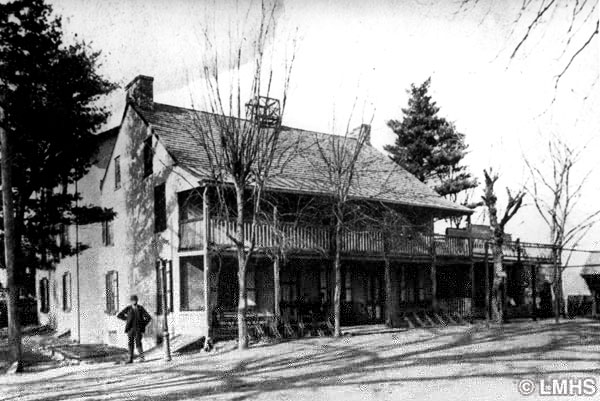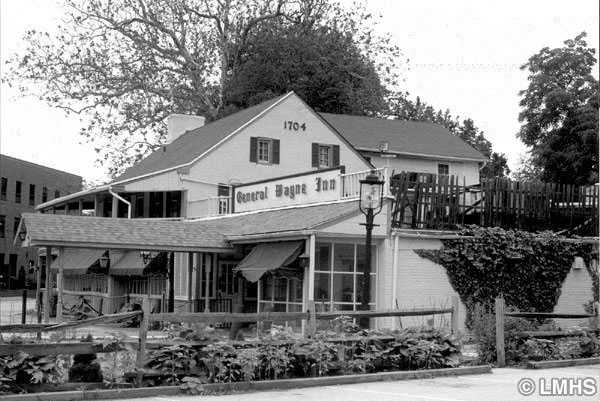The General Wayne Inn
The First Owners
Myths overlaid facts about this special gathering place for more than 250 years. Somewhere in or under the building stand remnants of original walls built in 1709 for Robert Jones (Robert ap John), second of four sons of John ap Thomas, Quaker leader and co-purchaser of land directly from William Penn, who died before the family sailed to America.
Robert was a member of the Provincial Assembly and a justice of the peace in colonial times, but never an innkeeper. When he died in 1746, he left the property to grandson Silas Jones of Darby who rented it to Anthony Tunis. Tunis, so far as is known, was the first to operate an “Ordinary,” serving meals at a fixed price.
By this time the country road passing the Tunis Ordinary and the Quaker meetinghouse next door had become an important route west, the King’s Highway or the Great Conestoga Road.
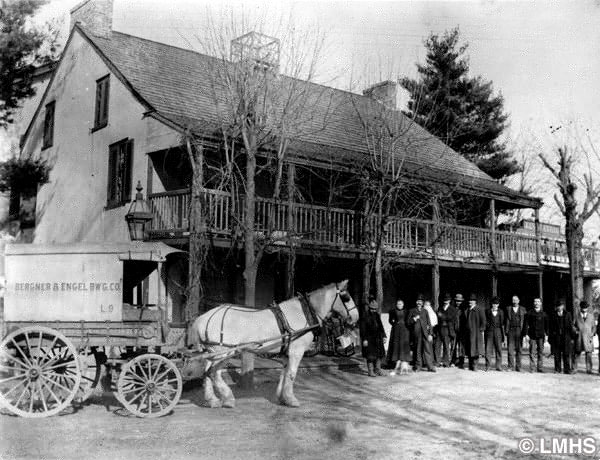
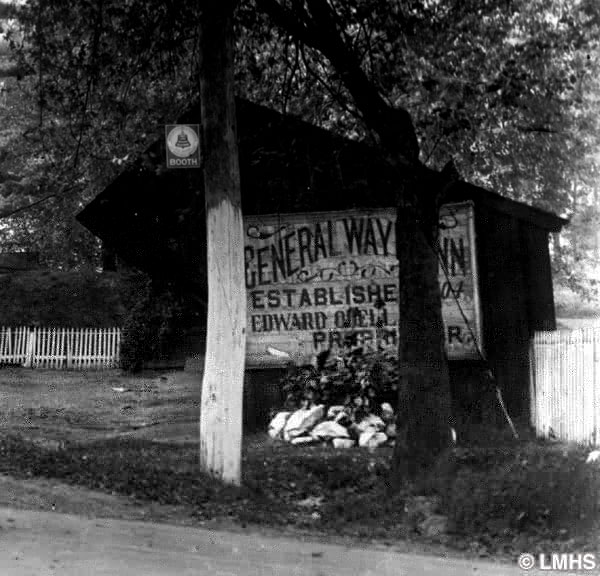
Came the Revolution
The road, which in less than 100 years had lengthened the link between Philadelphia, Lancaster and towns beyond the Susquehanna River, provided a way for both British and patriots to march. It carried coaches filled with Continental Congressmen fleeing to York, and regularly accommodated long packtrains carrying provisions to feed the city.
In 1775, Abraham Streaper (also Streeper) bought the inn, probably enlarged it, and continued the establishment as a place of rest and refreshment. Streaper’s wife, Hannah, was a great, great granddaughter of Dr. Thomas Wynne, William Penn’s compatriot.
Washington’s Encampment
On Sunday September 14, 1777, Washington’s army crossed from the Roxborough side of the Schuylkill to the Lower Merion side via Levering’s ford. Journals of participants describe: “the water being nearly up to the waist” and before dark “(we) reached the great road to Lancaster at Merion Meeting House, and proceeded up that road, when we encamped in an open field…”
Perhaps Washington had a bowl of soup at the Streepers, but proof is lacking. The next day, from the Buck Tavern about three miles west along the Lancaster Road, the General sent a plea to Congress for blankets and provisions “the season becoming cold…” Washington took his army west to prevent the British from reaching an American supply depot at Reading; meanwhile Cornwallis took Philadelphia on September 26. Three months would go by before weary Americans settled into winter camp at Valley Forge.

Naming the Inn
When did the tavern get its name? Probably after Mad Anthony’s triumph at Stony Point, New York in 1779. In 1790, an appeal was advertised for a stolen horse to be returned to “Abraham Streeper, living at the sign of General Wayne.” Although much repeated, the story is not true that on February 6 or 9, 1795, three troops of Philadelphia Light Horse came out to Streeper’s to celebrate General Anthony Wayne’s return from victory in the Battle of Fallen Timbers. A neighbor, Joseph Price who frequented Streeper’s bar and was “sparking” Mary Streeper, kept a diary. For the days mentioned as the time of welcome for General Wayne, Joseph records nothing more exciting than a bit of fox hunting, coffin making, and attending Merion Meeting next door.
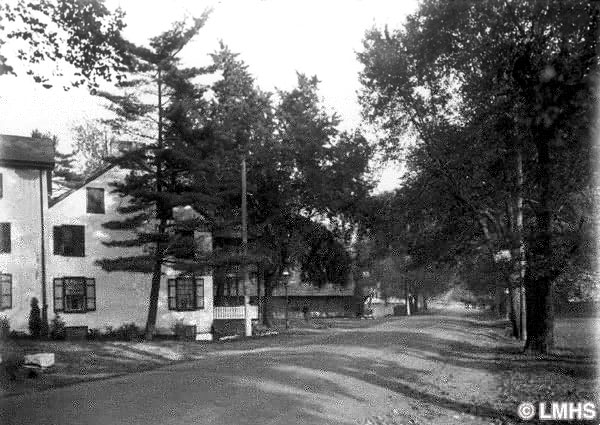
On February 10, Joseph set off in the snow for Norristown, on behalf of Mary to obtain a court order to sell Streeper’s Tavern to pay debts. It was hardly a time of wild celebration at the tavern; no feasting on “assorted pastries and baked goods brought in by the farm wives from far around the Merion area” as one romantic wrote.
Edward Price bought the inn and the next day deeded it back to Mary Streeper, now cleared of debt. Alas, she married Titus Yerkes, not J. Price, and the public called it Yerkes from then on.
Politics and Postal Service
In 1806, the inn became the polling place for the district, On election day a horse and wagon shuttled back and forth between Ardmore and the General Wayne, for Democrats only. Libations poured freely at both ends of the line “as an accessory to hilarity following success, or as a solace to the regret of defeat” according to the recollections of Josiah Pearce. “On certain occasions the Democratic majorities were so heavy the messenger from the Wayne really staggered under their weight when he reached the boss’ office.”

The General Wayne post office was established February 5, 1830, closed on July 10; re-established February 8, 1850, then moved to another location as Academy Post Office in 1882.
In 1854, Yerkes’ daughter sold the inn for $13,500 to David Young with an added acre, presumably across the road. James Baird owned it from 1883, and Timothy Murphy bought a part to build a blacksmith shop in 1885. Edward O’Dell bought the General Wayne in 1897 about the time Belmont Driving Park, just up Meeting House Lane, became a harness-racing mecca, with fans of fast horses taking sides, trotters vs. pacers. In 1936, a sheriff’s sales delivered the Wayne into the hands of I. Newton Smith who ultimately sold it to Barton Johnson, landlord for many years.
An Historic District
Concerned about the preservation of the building and the meetinghouse, a group petitioned The Pennsylvania Historical and Museum Commission in 1998 to include the two buildings in a small historic district. In September of that year, the Merion Friends Meeting/General Wayne Inn Historic District was created, thus honoring two important buildings and protecting the inn from inappropriate changes in the future.
